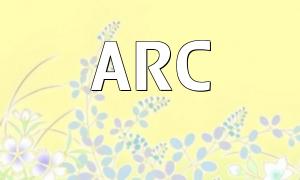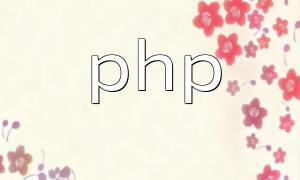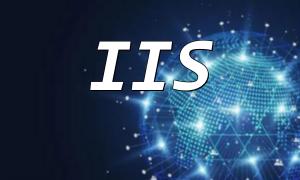Setting up a PHP development environment on macOS is a crucial step for any web developer. Properly configuring PHP not only enhances development efficiency but also prevents issues caused by misconfigured environments. Below is a practical guide to help you get started with PHP on Mac.
The most recommended way to install PHP on macOS is through Homebrew, a popular package manager. First, open your Terminal and install Homebrew with the following command:
/bin/bash -c "$(curl -fsSL https://raw.githubusercontent.com/Homebrew/install/HEAD/install.sh)"Once Homebrew is installed, run the following command to install PHP:
brew install phpAfter installation, check if PHP is installed correctly by running:
php -vIf the version number is displayed, PHP has been successfully installed.
The main configuration file for PHP is php.ini, which controls settings like error reporting, timezone, and extensions. Find the location of this file by running:
php --iniThen open the file with a text editor, for example:
nano /usr/local/etc/php/8.3/php.iniTo make debugging easier during development, enable error display. Look for this line:
display_errors = OffAnd change it to:
display_errors = OnIt's also important to set the correct timezone. Find the following line in php.ini and uncomment it:
;date.timezone =Then change it to something like:
date.timezone = "America/New_York"Composer is a widely-used dependency manager for PHP that helps manage third-party libraries easily. Install Composer on macOS with:
brew install composerOnce installed, you can initialize Composer in your project directory using:
composer initYou can easily add required packages with Composer. For example, to install the Guzzle HTTP client:
composer require guzzlehttp/guzzleComposer will handle downloading and autoloading the dependencies into your project.
To verify that everything is set up correctly, create a simple test file named test.php with the following content:
<?php phpinfo(); ?>Place this file in your web server's root directory (e.g., ~/Sites), and open it in a browser. You should see a page displaying your PHP configuration info, which confirms your setup is working.
With the steps outlined above, you've successfully installed and configured PHP on your Mac, including editing the php.ini file, using Composer for dependency management, and verifying everything is working correctly. A properly configured environment is key to productive and error-free development.
If you encounter any issues, consult the official PHP documentation or community forums for further support.









